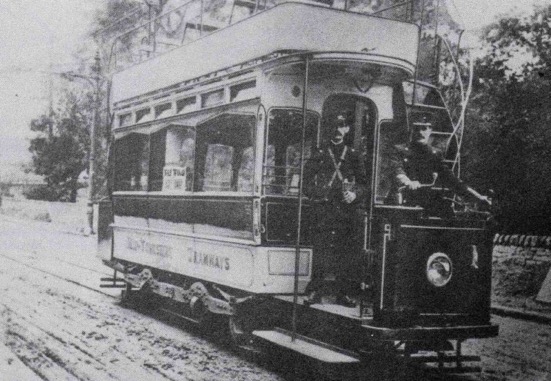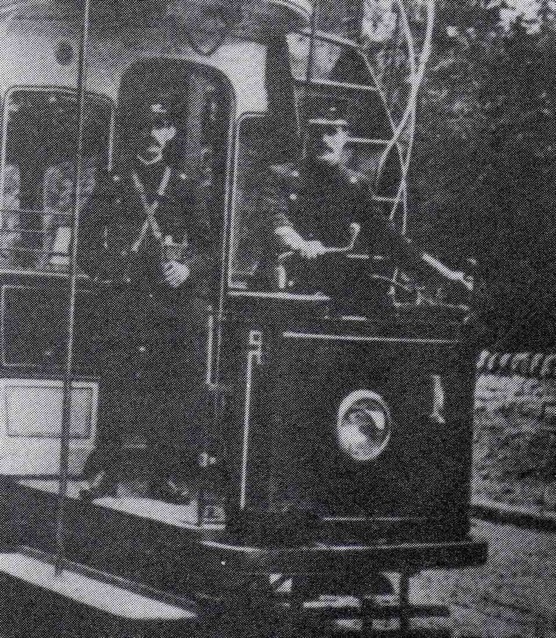Mid-Yorkshire Tramways
History
The Mid-Yorkshire Tramways Company, which was founded in late 1902, had grand plans for an extensive tramway network linking, amongst other places, Ilkley, Otley, Shipley, Bingley and Keighley.
The tramway was the idea of two promoters — Robert C Quin and Alfred J S Musgrave — whose first job was to solicit the support of the various local authorities through whose areas the proposed tramway would run. Amongst these were Shipley Local Board and Keighley Corporation, the former owners of 1.4 miles of steam-operated tramway leased to Bradford Corporation, the latter owners and operators of 2.28 miles of horse-drawn tramway; importantly, both also held powers to construct electric tramways. Gaining Shipley's support was crucial to the scheme, as the Local Board area sat in the middle of the proposed system; however, this was far from straightforward as Shipley were already in the process of converting their existing line to overhead electric traction, having leased it to Bradford Corporation for 30 years in early 1902. Despite this, a deal was reached for the promoters to build and operate Shipley's new lines, whereupon they formed the Mid-Yorkshire Tramways Company. The deal exploited the local rivalry between Shipley and Bradford, the former striving to keep its larger neighbour at arms length, even where this was likely to make no commercial sense. Agreement was no doubt also facilitated by the terms offered to Shipley.
The MYTCo also reached agreement with Keighley to the west, the corporation building a line out to the municipal boundary at Stockbridge to meet the company's proposed line from Nab Wood on the Shipley boundary, with the company having the right to run through to the centre of Keighley. Having reached agreement with the two councils, the MYTCo then submitted (in November 1902) an application to build the tramway sections outside Shipley and Keighley, the powers for which were granted on the 14th August 1903.
Construction of Shipley's new lines, authorised under the Shipley Improvement Act of 1901, commenced in March 1903, the work being done by the MYTCo's contractor, the well-known firm of J G White & Co Ltd. The majority of the 4 ft-gauge overhead electric system (Nab Wood to Thackley) was opened on the 23rd July 1903, with tramcars borrowed from Bradford City Tramways — no doubt much to the embarrassment of Shipley's councillors — the remainder of the system (Baildon Bridge to Bradford Rd) following on the 14th November. By now however, the MYTCo was in severe financial difficulties, having failed to secure the financial backing necessary to build the tramway, let alone operate it. This led, in November 1903, to the promoters handing over their holdings in the MYTCo to J G White & Co Ltd, presumably in lieu of payment for services, the contractors thereby becoming the de facto owners of the MYTCo.
On top of this blow came yet more bad news, as takings on the new tramway proved to be well below expectations, it becoming abundantly clear to all that a tramway system run independently of the Bradford system was simply not viable. Negotiations were eventually held between Shipley Local Board, Bradford Corporation and the MYTCo, the latter agreeing to surrender its lease to the council (for £32,751), which then transferred it to Bradford Corporation. The corporation meanwhile purchased the MYTCo's tramcars and spares, taking over operation on the 30th April 1904.
The MYTCo had started out with boundless optimism in an area where four previous tramway operators had failed, most of them being financially ruined in the process (see link). The company never in fact built or operated any of the circa 20 miles of tramway for which it had powers, instead operating just 3.43 miles belonging to Shipley Local Board (Urban District Council from 1894). This comprised a route running from the Shipley municipal boundary at Nab Wood in the west through Saltaire and Shipley to the the eastern boundary in Thackley, and a route running from Baildon Bridge in the north, southwestwards through Shipley to join the BCT-operated Saltaire-Frizinghall line at the Branch Hotel.
Uniforms
Given that the Mid-Yorkshire Tramways Company lasted barely 9 months as a tramway operator, it is perhaps no surprise to discover that only a single photograph with tramcar staff appears to have survived. This shows that motormen and conductors were issued with double-breasted, 'lancer-style' tunics with five pairs of buttons (narrowing from top to bottom) and upright collars; although the latter may have borne insignia — such as system initials and/or an employee number — the poor quality of the surviving photo means that this is impossible to discern. Headwear took the form of kepi-style caps with glossy peaks; they certainly bore a cap badge of some description, though exactly what form this took remains unknown.
Photographs of senior staff such as inspectors have not survived, so it is impossible to state what uniforms they wore.
Further reading
For a history of the Mid-Yorkshire Tramways Company, see 'Shipley Tramways' by John Pollard, in the Tramway Review, Nos 155 (p84-94) and 156 (p124-136); Light Railway Transport Association (1993).
Images
Motormen and conductors
Mid-Yorkshire Tramways Tramcar No 1 on a very muddy road somewhere between Nab Wood and Saltaire — 1904. Photo courtesy of the Tramways and Light Railway Society, with thanks to David Voice.
A blow-up of the above photo, which though of poor quality, does show that both conductors and motormen wore double-breasted, 'lancer-style' tunics with upright collars. The caps would appear to be kepis, which certainly bore a badge of some description, though precisely what form this took remains unclear.